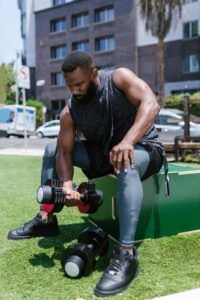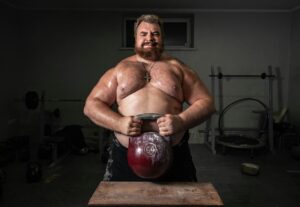Now is the perfect moment to unwind in the sun as summer approaches. For weightlifters who take their sport seriously, this means taking off their shirts and flaunting their toned body that they have been working on all year. It’s time for beach days, pool parties, and barbecues. Everyone wants to look good, so over the next month or two, all of those serious lifters will be putting “get ripped” into high gear. Nobody wants to be flabby and soft.

How do they usually go about this?
They lighten up the weights and perform higher reps.
This has always been a widely accepted method of “cutting down” and if you ask most trainers in the gym they’ll tell you that “heavy weights bulk up the muscle and lighter weights define the muscle”.
Do you want to know the reality behind the “light weight and high reps” method of obtaining a ripped and defined physique?
It is completely, totally and utterly DEAD WRONG.

This method of training couldn’t be further from reality. In fact, there’s absolutely no rational foundation for this approach, and whoever devised this utterly absurd mindset has led most weightlifters to squander their time and hinder their gym progress.
Let’s set the record straight once and for all: spot reduction is a myth. Put simply, it’s physically impossible to selectively lose fat from a particular area of your body. Engaging in bench presses with low resistance and numerous repetitions won’t miraculously torch fat from your chest or result in a firmer, more sculpted appearance.
Every single time you wrap your hands around a barbell, dumbbell or cable, your goal is to stimulate as much muscle growth as you possibly can. There are no special, secret weightlifting exercises that will “define” your muscles or cause them to become more “ripped”.
Training with weights builds muscle mass.
So how exactly do you “define” a muscle?
The only way to “define” a muscle is by lowering your body fat level in order to make your muscles more visible. Body fat reduction can be achieved in two ways:
1) Modify your diet.
To achieve your goal, aim to reduce your daily caloric intake to approximately 15 times your body weight. Opt for smaller, frequent meals throughout the day to maintain a consistently elevated metabolism and promote continuous fat burning. Prioritize lean protein sources and low glycemic carbohydrates while minimizing consumption of saturated fats and simple sugars. Additionally, ensure adequate hydration by aiming for a water intake of roughly 0.6 ounces per pound of body weight.

2) Perform proper cardio workouts.

Let go of the traditional method of moderate intensity cardio in 30-45 minute durations. If you want to maximize your body’s fat burning capacity and also minimize the muscle loss that inevitably accompanies a fat burning cycle, focus on shorter cardio workouts performed at a high level of intensity. These types of workouts will shoot your resting metabolism through the roof and will allow you to burn maximum amounts of fat even when you are at rest. I recommend 3-5 high intensity cardio sessions per week, spaced at least 8 hours away from your weight workouts.
Take the notion of “light weight and higher reps” and throw it right out the window, down the street and around the corner. Following this misguided method will only cause you to lose muscle mass and strength, and will not assist you in burning fat or defining your physique.
All you need to do to mold those rock-solid muscles for the summer time is this:
1) Train with heavy weights and low repetitions to build maximum muscle mass.
2) Modify your diet and implement cardio workouts to eliminate body fat and create visibly harder and more defined muscles.




